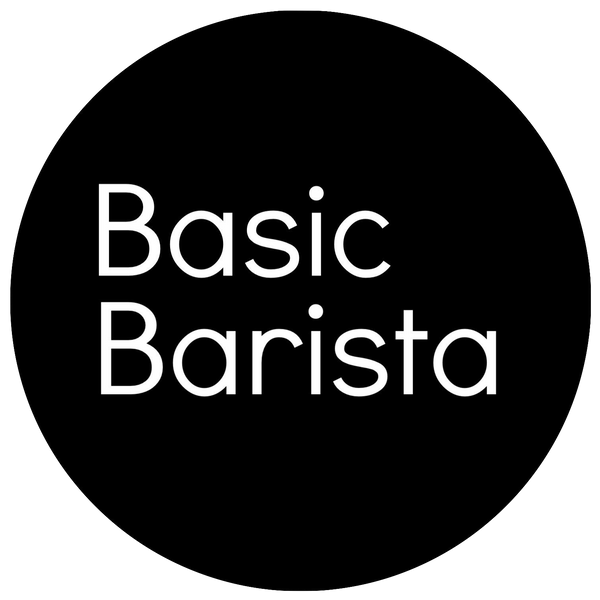
Lotus Coffee Brewing Water Recipes
Share this article
Shop our range of Water Brewing Minerals for Coffee here.
Flavour
Water impacts the flavour of your coffee in three primary ways. The first is pretty straightforward: the flavour of your water will have a direct impact on the flavour of your coffee. The flavour of water is determined by the minerals and other matter present. The content of your tap water largely depends on where you live and how the water was treated. For example, calcium, often from limestone, can give water a smooth milky flavour. If you live near an ocean your water may have a slight sulfur smell due to the presence of sulfur producing microbes. Water taken from lakes can taste earthy from leftover plant matter and so on. The key takeaway here is that any off flavours in your water before you brew your coffee are still going to be there when you’re finished making it. Starting with distilled or reverse osmosis water is the best way to ensure you are starting with a clean slate when brewing coffee.
Hardness
Hardness in water is defined by the amount of calcium and magnesium ions present in the water. While the exact mechanisms by which these ions interact with coffee and our perception of the flavours in coffee are not yet fully understood, the effects are generally agreed upon: too much hardness will produce bitterness and astringency, while too little hardness can produce a weak and tea-like cup.
Alkalinity
Not to be confused with “alkaline,” meaning basic on the PH scale, alkalinity is a measure of the amount of carbonate and bicarbonate ions in water and represents its buffering capacity. Alkalinity tends to have a greater overall impact on your cup when compared to hardness and the range that is generally accepted to be desirable is smaller as well. If water has too much alkalinity, the resulting cup will be flat and chalky. Too little and you coffee may come out tasting sharp and too acidic.
Calcium
Creamy and juicy. Calcium in water recipes can help highlight the texture and sweetness of coffees while maintaining clarity at lower ppm. While calcium does a great job of accentuating the fruit notes in coffee, too much can pull in bitterness and drying astringency.
Magnesium
Sweet and complex. If your brew is coming out too one dimensional then magnesium is sure to help with that. This mineral is useful for adding strength and bringing out a wide variety of flavours in your coffee. While the variety of flavour magnesium brings is great, too much can cause coffee to taste muddy or complex to the point that no one particular flavour is easy to identify or pick out. (Mg2+ is what Dr. Hendon refers to as "extremely stick" in relation to Ca2+)
Potassium
Potassium bicarbonate is like a dial on the perception of acidity of your coffee and it can be quite sensitive. Compared to the hardness ingredients above, even small changes in this ingredient can have a significant effect on your brew. In most coffees potassium creates a sharp but pleasant finish, however, in a coffee with any off flavours this sharpness can often be a bit too intense.
Sodium
Just like potassium, sodium bicarbonate changes the acidity of your brew in a big way but can also be used to tame bitterness or off flavours. Additionally, in contrast to the sharp finish of potassium, sodium creates a smooth and elegant finish that is very enjoyable. When used to brew a coffee that isn’t bringing a lot to the table in terms of flavour, using only sodium as an alkalinity source can lead to a slightly one dimensional flavour profile.
Simple and Sweet (450ml) Recipe:
Add the number of drops listed to the 450 mL mixing bottle filled with distilled or reverse osmosis water
Manual Brew (90 ppm GH/40 ppm KH)
- 6 drops Calcium
- 3 drops Magnesium
- 3 drops Potassium
- 5 drops Sodium
Espresso (20 ppm GH/55 ppm KH)
- 2 drops Magnesium
- 11 drops Sodium
Simple and Sweet makes use of Magnesium to add some body and sodium to bring a pleasant and smooth finish to your coffee. While light and bright truly shines when paired with the right coffee, simple and sweet is a recipe that can produce great results no matter what you are brewing.
Simple and Sweet (1L) Recipe:
Manual Brew (90 ppm GH/40 ppm KH)
- 13 drops Calcium
- 7 drops Magnesium
- 7 drops Potassium
- 11 drops Sodium
Espresso (20 ppm GH/55 ppm KH)
- 4 drops Magnesium
- 24 drops Sodium
Light and Bright (450ml) Recipe:
Manual Brew (60 ppm GH/25 ppm KH)
- 6 drops Calcium
- 5 drops Potassium
Espresso (20 ppm GH/45 ppm KH)
- 2 drops Magnesium
- 9 drops Potassium
Light in Bright is the result of Lance Hedrick’s journey to find a water recipe that accentuates the fruitiness and acidity found in light roasted coffee. After many rounds of double blind testing, the simple combination of calcium and potassium beat out all the others for providing the most vibrant but balanced cups.
Light and Bright Recipe (1L):
Manual Brew (60 ppm GH/25 ppm KH)
- 13 drops Calcium
- 11 drops Potassium
Espresso (20 ppm GH/45 ppm KH)
- 4 drops Magnesium
- 20 drops Potassium





1 comment
Hi, does this mean that 1 drop of calcium in 1 L distilled water corresponds to 2,5 ppm?